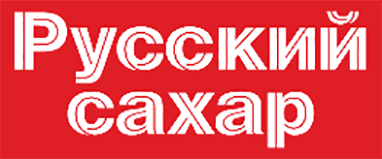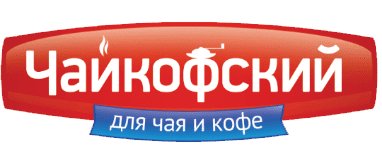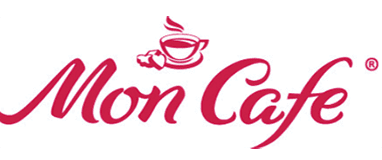Rusagro’s results in 2020
Sugar plants
Rusagro’s Sugar Business is represented by nine sugar plants located in the Tambov, Belgorod, Kursk, and Orel Regions in close proximity to the sugar beet cultivation areas of the Company’s Agriculture Business. In the Tambov Region, the Company runs the Znamensky, Nikiforovsky and Zherdevsky sugar plants, in the Belgorod Region – Chernyansky, Nika and Valuysky plants, in the Kursk Region – Krivetsky and Kshensky plants, in the Orel Region – Otradinsky plant.
In 2020, maximum sugar beets processing capacity of Rusagro’s plants remained at the level of the previous year – 53,850 tonnes of beets per day. Over a season (period from August to July), the Company can at most produce about 900 thousand tonnes of sugar from beets exclusive of sugar produced from molassesMaximum sugar production capacity is estimated based on total processing capacity of 53,850 tonnes of sugar beet a day, 115 days of processing and sugar output of 14.5%. Number of days plants process the sugar beet and sugar output vary due to different factors, for example sugar beet yield and its sugar content.
The key by-products of sugar beet processing at Rusagro’s sugar plants are pulp and molasses. The pulp is sold to third parties, while the molasses is used for deep sugar production and betaine recovery. The first molasses desugarisation facility was launched in 2017 in the Tambov Region and the second one – at the end of 2019 in the Belgorod Region. The maximum processing capacity of molasses at both stations approximates 310 thousand tonnes. From 2020 on, the Company utilises the total amount of molasses for deep processing, thus allowing to additionally produce around 100 thousand tonnes of sugar and 30 thousand tonnes of betaine, which makes Rusagro the world leader in the production of this amino acid.
Other assets
The Company’s assets include JSC Gerkules cereal plant, a large grains processing facility with its own packaging line. The plant produces buckwheat and crushed buckwheat for B2B channel and packaged buckwheat and rice – for B2C channel.
The Company’s product portfolio includes four key brands of different price categories: Russkii Sakhar (Russian Sugar), Chaikofsky, Mon Café, and Brauni. The Company is the leader in the consumer sugar market and these brandsare the market leaders in their respective segments. Russkii Sakhar is number one and Chaikofsky is number two in Russian white sugar lumps market, while Brauni is number one in Russian brown sugar lumps market. They are also the most popular brands among the Russian consumers, as confirmed by AK Nielsen retail audit data and the consumer preference tracking study undertaken by Synovate Comcon, an independent research company. Rusagro’s brands enjoy the high level of brand awareness, consumption, and customer loyalty. Since 2015, the Company has been selling cereals under the brand Tyoplye Traditsii (Warm Traditions).





In 2020, Rusagro invested RUB 1.5 billion in development and maintenance of the Sugar Business – down 56% year-on-year, due to the to the completion of the project for the construction of a desugarisation facility in the Belgorod Region. In 2019, the facility was launched to process molasses into extract that was used to produce additional sugar in 2020. As the result the bulk of the funds (83%) in 2020 was allocated for business development, while in order to maintain the existing facilities of the Sugar Business, the Company allocated 17% of the budget.
The Sugar Business is one of the most technology-intensive segments of Rusagro. The Management of high technology projects created the Department of Innovation Development. The strategic goal of the Department’s activities is to reduce losses at all stages of sugar beet production by adopting the best world practices and innovative solutions with an eye on cost-effectiveness. The main active work is focused on three key programmes: Raw Materials Management, Long-Term Storage, and Smart Production.
In 2019, the Company implemented the first stage of the digital transformation strategy for the Sugar Business – Digital Measurements, which is the foundation for creating a decision-making system based on digital data. The key goal of this stage is to minimise the human factor in measuring production efficiency parameters. In 2020, the works under this project were completed, enabling the high accuracy online measurement of the KPIs (key target indicators) of the Sugar Business.
- The Raw Material Management Programme focuses on reducing beet storage losses through automation of the measurement-based scheduling using thermal monitoring on an IIOT-platformThe Industrial Internet of Things (IIoT) refers to a system of interconnected computer networks and industrial (production) facilities connected to them with built-in sensors and software for data collection and exchange, adapted for remote monitoring and control in an automated mode, without human intervention. To evaluate the management quality at the beet storage facility, a project was undertaken to employ drones for measuring the sugar beet left-over stock. In 2020, the implementation of this programme at the Znamensky plant resulted in automatic accounting of beets supplied to production, allowing the Company to keep track of losses of beets stored in piles.
- The purpose of the Long-Term Storage Programme is to try out methods to extend plant’s service time by extending the storage life of beets up to 90 or more days through the use of an aeration system. We utilise computer vision solutions to assess the quality of beets moving into long-term storage.
- The Smart Production Programme aims to reduce the losses on work sites through the computer-automated measurements and the use of artificial intelligence.
- In 2019, digital meters were installed in key workflow points to collect equipment operating parameters into single data storage and processing system. In order to streamline technological processes and reduce losses, a monitoring and machine learning module was developed to control a beet diffuser.
- In 2020, the monitoring module was rolled out across the entire technological line of the Znamensky plant in order to optimize the production process and find ways for further improvements in technology. The Company continues with the programme of equipping its laboratories with modern devices and systems: the automated beet reception laboratory at the Krivetsky sugar plant has been automated, and a pilot project has been carried out to automate the laboratory of the molasses desugarisation facility at the Znamensky sugar plant.
- The implementation of the project of robotic automation of the packing station at the Nika sugar plant is still ongoing.
by-products Near-infrared spectroscopy (NIR).
Production
Beet processing volume in 2020 amounted to 4.0 million tonnes (-30%), including 3.7 million tonnes of beets (-36%) in the 2020/2021 season. About 76% (+13 p.p.) of beets were purchased from Rusagro’s Agriculture Business. The plants worked up to 100 days in the reporting season (season 2019/2020: 136 days), starting in early September and ending in late December. The average sugar content of beets at a time of acceptance in the 2020/2021 season reached the level of 20.5% (excluding the sugar yield from molasses), which is 2 p.p. higher than last year.
In 2020, Rusagro produced 764 thousand tonnes of sugar, which is down 13% (-117 thousand tonnes) year-on-year. This volume covers 36 thousand tonnes of sugar produced at the beginning of the year within the 2019/2020 season, 105 thousand tonnes (+226%) of sugar from molasses recovered from beet processed in the 2019/2020 season and 622 thousand tonnes (-27%) of sugar produced from August to December 2020 within the 2020/2021 season.
Sales volume and Prices
In 2020, sugar sales amounted to 881 thousand tonnes, which is 21% (-212 thousand tonnes) less than in 2019. Negative change can be explained by production volumes drop due to smaller sugar beet yield. In addition to sugar, 236 thousand tonnes of pulp (+38%), 27 thousand tonnes of betaine (+229%), and 19 thousand tonnes of cereals were sold. The growth in pulp sales was driven by its high stock over from 2019/2020 season, and the growth in betaine sales – by the launch of the second desugarisation facility. About 83% of the products sold belong with the B2B segment.
Rusagro’s average annual selling price of sugar grew by 7%to RUB 29.5 per kg exclusive of VAT, following the movement of market prices (+11%). Over the year, average selling prices went up by 30% from RUB 24.9 per kg, exclusive of VAT, in the first quarter of 2020 to RUB 39.2, exclusive of VAT, in the fourth quarter.
Consumer segment
In 2020, consumer segment accounted for 21% of sales volume and 23% of revenue of Rusagro’s Sugar Business. The decrease in figures by 6 and 4 p.p., respectively, is associated with a more attractive pricing environment in the B2B segment. The volume of sugar sales under its own brands amounted to 152 thousand tonnes, down 30% year-on-year. In 2020, Russkii Sakhar (Russian Sugar) and Chaikofsky continued to hold first and second position in white lump sugar market in Russia, and Brauni – to be a leader in brown lump sugar. According to AC Nielsen in December 2020, the total market share in the white lump sugar category of four Rusagro’s sugar brands – Russkii Sakhar (Russian Sugar), Chaikofsky, Mon Café and Horoshiy (Good) – amounted to 46% (+5.6 p.p.), including 32% (+1.6 p.p.) of Russkii Sakhar and 11% (+1.6 p.p.) of Chaikofsky. Meanwhile, Brauni achieved a 4.1 p.p. growth in its share in brown lump sugar market which reached 29% in December.
Exports
In 2020, Rusagro exported 255 thousand tonnes of products, which is 33% higher than in the previous year. The main export products for the Sugar Business are pulp and betaine. In the reporting period, the Company exported 86% of pulp and delivered 204 thousand tonnes (+30%) of products. The major buyers of pulp were China (42 thousand tonnes), Spain (31 thousand tonnes), and Norway (30 thousand tonnes). In 2020, exports of pulp to China were made possible for the first time ever – 8 out of 9 Rusagro’s plants were authorised by the Chinese State Commission. A poor harvest in southern Europe drove up the prices in this region, for which reason pulp was first supplied to Spain, Italy and Cyprus. The entire volume of betaine was exported – the main buyers were Austria, Belgium, and the USA. The volume of sugar exports amounted to 3% of the Company’s sales – 24 thousand tonnes of sugar (-13%).
In 2020, the sales of Rusagro’s Sugar Business decreased by 10%
In 2021, the major challenges for the Sugar Business of Rusagro will include the full loading of plants and molasses desugarisation facilities and adaptation to the changing framework of state regulation of sugar prices. The Company will keep on improving its production efficiency through the reduction of sugar losses and costs. This trend will mainly involve the efficient performance of molasses processing plants, innovations and production automation. The Company will continue to develop sugar sales to its industrial and retail consumers.